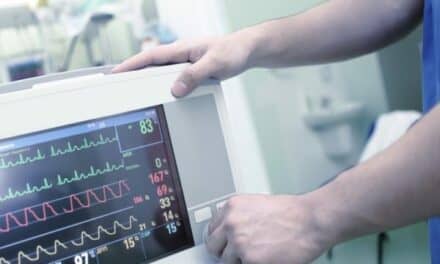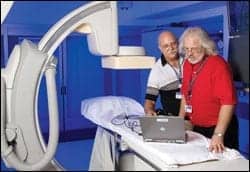Five ways clinical asset management technology empowers hospitals to improve patient safety, reduce risk, and optimize their equipment fleet.
By LeAnne Hester
During the pandemic, the adoption of telehealth technology by healthcare organizations accelerated exponentially. This adoption has laid the groundwork for providers to further evaluate the role technology can play in supporting patient care, caregiver satisfaction, and operational efficiencies. However, one often overlooked opportunity for providers is clinical asset management. Although medical devices continue to become more sophisticated, few providers are fully harnessing the power of technology, data, and software to effectively manage their device inventory.
The increased complexity of medical devices, including connectivity to the internet and storage of electronic protected health information (ePHI), combined with the shift to provide care in a variety of settings, underscores the critical need for real-time visibility of all clinical assets. While inventory visibility is foundational, it is still not enough. Organizations also need an objective and comprehensive view on the status of their equipment to support strategic planning, to deliver patient care in the right setting, and to minimize operational and capital expenses associated with medical devices.
After working with more than 4,500 provider locations, TRIMEDX has identified five key areas where healthcare organizations can realize these outcomes by leveraging clinical asset management technology.
1. Improving clinical asset management by streamlining device maintenance.
At a time when the labor pool of qualified HTM professionals is shrinking and supply chain shortages are growing, streamlining the maintenance of devices has never been more important. The pandemic has caused further challenges as many providers have struggled to keep up with basic preventative maintenance (PM) routines, putting compliance and patient safety at risk.
To streamline device maintenance, technology integration and automation are invaluable. Examples of how technology can enhance device maintenance include:
- Creating “smart” work orders that include information on frequently ordered parts for the repair, as well as access to service manuals to save technician time.
- Developing an annual schedule that allows preventative maintenance to be planned and evenly divided throughout the year, including automated PM work orders and status tracking.
- Integrating supply chain with clinical engineering to better forecast needed parts and to help monitor supplier quality and performance.
- Integrating supply chain with parts vendors to save time in ordering and order confirmations.
- Automating FDA alert and recall management, including visibility to status of impacted devices.
2. Predicting device failures to minimize downtime.
Unplanned downtime is the bane of clinicians and medical device management. At its worst, it also affects patient care and satisfaction. However, advances in technology are now making it possible to predict device failures before they happen, enabling providers to schedule downtime when it will not impact patient care. This also improves the patient experience and minimizes revenue loss that can occur from unexpected device failures. Predictive systems include the following components:
- Leveraging biomed expertise, service histories, and data science to identify preventable device failures and their symptoms.
- Employing remote device monitoring to monitor and detect these predictive events.
- Using automated “smart” work orders that alert HTM professionals to device problems before a failure occurs.
- Notifying clinicians and scheduling time to remedy the situation prior to an event.
3. Real-time cybersecurity monitoring and proactive remediation improves clinical asset management.
Ransomware threats are rising. As more devices are increasingly being connected to the internet, cybercriminals are turning a darker corner by not only holding hospital records hostage but also by controlling the operation of medical devices. This can directly put patient care at risk.
Earlier this year, McAfee researchers discovered vulnerabilities in two types of infusion pumps that might allow hackers to deliver double doses of medicine to unsuspecting patients, HealthITSecurity reports. A June 2021 FDA report underscored the threat. “These cybersecurity concerns,” the report said, “have the potential to result in patient harm such as illness, injury, or death as a result of delayed treatment or other impacts to medical device availability and functionality.”
5. Informing capital planning to optimize the equipment fleet.
Too few devices or too many devices present problems. A right-sized fleet, on the other hand, allows a health system to save millions of dollars by curbing unnecessary capital purchases and reducing repair and maintenance costs as well as the need for rental expenses. By using technology and data to analyze the demand and use of clinical assets across all sites of care, healthcare executives can make informed decisions on what constitutes a right-sized clinical asset fleet and how to reallocate their inventory.
Balancing whether to replace or dispose a piece of medical equipment requires weighing both capital and operating expenditure considerations. What is the true useful life of a medical device? Among the factors to weigh are age, repair history and parts availability, amount of existing inventory, device utilization, and FDA recalls and cybersecurity risks. Software algorithms can analyze this data and provide recommendations on which devices should be replaced or dispositioned. This data-driven guidance helps providers align capital planning with strategic initiatives.
In summary, management and servicing of medical devices should be viewed as a strategic lever by healthcare executives. Not only are they vitally connected to patient care and safety, they also have a significant impact on financial performance. Providers who invest in and leverage clinical asset management technology across the areas discussed here will be empowered to reduce risk, improve device availability, minimize expenses, and optimize fleet utilization.
LeAnne Hester is chief marketing officer of TRIMEDX. Questions and comments can be directed to 24×7 Magazine chief editor Keri Forsythe-Stephens at [email protected].




